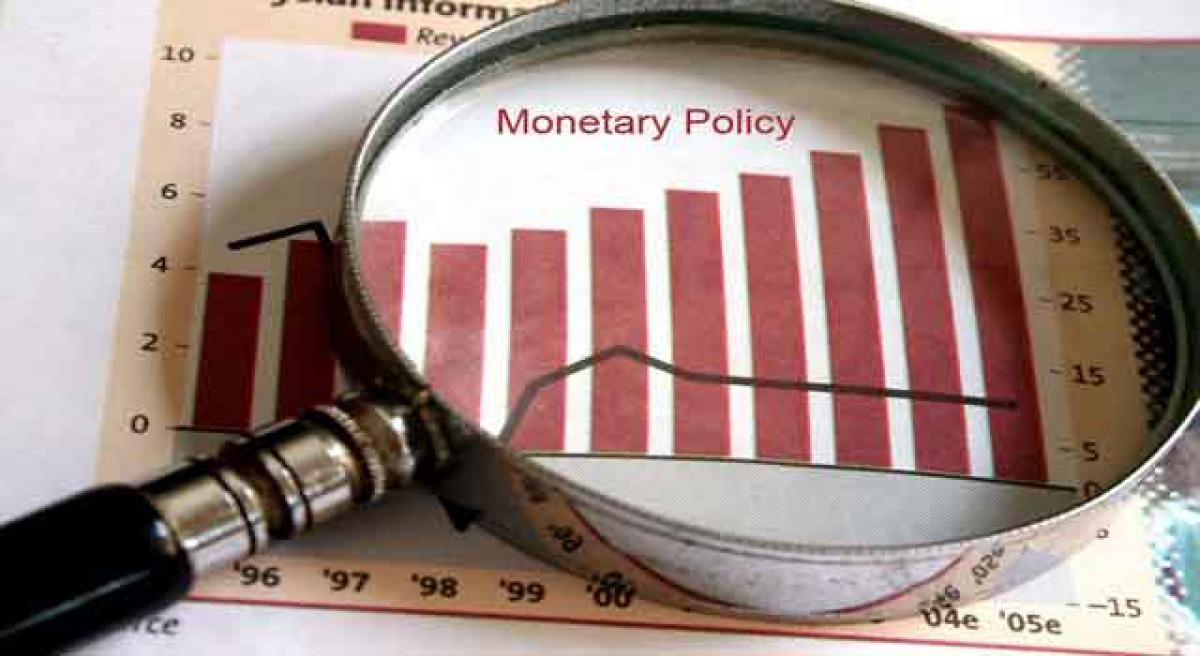Understanding Monetary Policy Committee

The other three Members of MPC will be appointed by the central government, on the recommendations of a search-cum-selection committee, which will be headed by the cabinet secretary. These three members of MPC will be experts in the field of economics or banking or finance or monetary policy and will be appointed for a period of four years and shall not be eligible for re-appointment.
A committee-based approach will add lot of value and transparency to monetary policy decisions. Out of the six members of MPC, three members will be from the Reserve Bank of India (RBI), including the Governor, who will be the ex-officio Chairperson, the Deputy Governor, RBI and one officer of RBI.
The other three Members of MPC will be appointed by the central government, on the recommendations of a search-cum-selection committee, which will be headed by the cabinet secretary. These three members of MPC will be experts in the field of economics or banking or finance or monetary policy and will be appointed for a period of four years and shall not be eligible for re-appointment.
The meetings of the MPC shall be held at least four times a year and it shall publicise its decisions after each such meeting.
Background
MPC was set up consequent to the agreement reached between government and RBI to task RBI with the responsibility for price stability and inflation targeting. The Reserve Bank of India and Government of India signed the Monetary Policy Framework Agreement on 20 February 2015.
Subsequently, the government, while unveiling the Union Budget for 2016-17 in the Parliament, proposed to amend the Reserve Bank of India (RBI) Act, 1934 for giving a statutory backing to the aforementioned Monetary Policy Framework Agreement and for setting up a Monetary Policy Committee (MPC).
With this amendment, it was written into the preamble of the RBI Act that the primary objective of the monetary policy is to maintain price stability, while keeping in mind the objective of growth, and to meet the challenge of an increasingly complex economy, RBI would operate a Monetary Policy Framework.
Thus the amendment provides a statutory basis for a Monetary Policy Framework (MPF) and the MPC. This amendment to RBI Act was carried out through the Finance Bill, 2016 presented along with the union budget documents.
A new chapter (Chapter IIIF, Section 45Z) was introduced in the RBI Act, through this Finance Bill, 2016, detailing the operation of MPC. The provisions in the Bill become effective once it is passed and notified as an Act of Parliament.
The history of suggestions for setting up a MPC is not new and traces back to 2002 when the Y V Reddy Committee recommended for a MPC to decide policy actions. Subsequently, suggestions were made to set up a MPC in 2006 by the Tarapore Committee, in 2007 by the Percy Mistry Committee, in 2009 by the Raghuram Rajan Committee and then in 2013, both in the report of the Financial Sector Legislative Reforms Commission (FSLRC) and the Dr Urjit R. Patel (URP) Committee.
According to the URP Committee, "Heightened public interest and scrutiny of monetary policy decisions and outcomes has propelled a worldwide movement towards a committee based approach to decision making with a view to bringing in greater transparency and accountability in India."
What is 'monetary policy?'
Monetary policy, consists of the actions of a central bank, currency board or other regulatory committee that determine the size and rate of growth of the money supply, which in turn affects interest rates.
Monetary policy is maintained through actions such as modifying the interest rate, buying or selling government bonds, and changing the amount of money banks are required to keep in the vault (bank reserves). The Federal Reserve is in charge of the United States' monetary policy.
Types of 'monetary policy'
Broadly, there are two types of monetary policy, expansionary and contractionary. Expansionary monetary policy increases the money supply in order to lower unemployment, boost private-sector borrowing and consumer spending, and stimulate economic growth. Often referred to as "easy monetary policy," this description applies to many central banks since the 2008 financial crisis, as interest rates have been low and in many cases near zero.
Tools of monetary policy in India
The Reserve Bank of India (RBI) uses the monetary policy to manage liquidity or money supply in a manner that balances inflation and at the same time aids growth.
Repo and Reverse Repo Rate
Repo is a transaction wherein securities are sold by the RBI and simultaneously repurchased at a fixed price. This fixed price is determined in context to an interest rate called the repo rate. The transaction is relevant for banks; when they need funds from the RBI, the central bank repurchases the securities.
The higher the repo rate, more costly are the funds for banks and hence, higher will be the rate that banks pass on to customers. A high rate signals that access to money is expensive for banks; lesser credit will flow into the system and that helps bring down liquidity in the economy. The reverse is the reverse repo rate, which banks use to park excess money with RBI.
Cash Reserve Ratio (CRR)
This is the percentage of a bank’s total deposit that need to be kept as cash with the RBI. The central bank can change the ratio to a limit. A high percentage means banks have less to lend, which curbs liquidity; a low CRR does the opposite. The RBI can reduce or raise CRR to tighten or ease liquidity as the situation demands.
Open Market Operations
This refers to buying and selling of government securities by RBI to regulate short-term money supply. If RBI wants to induce liquidity or more funds into the system, it will buy government securities and inject funds, and if it wants to curb the amount of money out there, it will sell these to banks, thereby reducing the amount of cash that banks have. RBI uses this tool actively even outside of its monetary policy review to manage liquidity on a regular basis.
Statutory Liquidity Ratio
This is the percentage of banks’ total deposits that they are needed to invest in government approved securities. The lesser the amount of SLR, the more banks have to lend outside. The SLR has been brought down from 22 per cent to 21.5 per cent in this policy and the endeavour will be to reduce it by 0.25 per cent every quarter till 31 March 2017.
Bank Rate
This is the re-discounting rate that RBI extends to banks against securities such as bills of exchange, commercial papers and any other approved securities. In recent years, it has been the repo rather than the bank rate that has acted as a guideline for banks to set their interest rates.
In addition to these measures, RBI also uses many qualitative tools to regulate credit flow and cost of credit to the economy and specific sectors within it.
The qualitative measures do not regulate the total amount of credit created by the commercial banks. These measures make distinction between good credit and bad credit and regulate only such credit, which creates economic instability. Therefore, qualitative measures are known as the selective measures of credit control.
Qualitative credit control measures include:
(i) Prescription of margin requirements
(ii) Consumer credit regulation
(iii) Moral suasion
(iv) Direct action
(i) Prescription of margins requirements:
Generally, commercial banks give loan against ‘stocks or ‘securities’. While giving loans against stocks or securities they keep margin. Margin is the difference between the market value of a security and its maximum loan value. Let us assume, a commercial bank grants a loan of Rs 8000 against a security worth Rs 10,000. Here, margin is Rs 2000 or 20 per cent.
If central bank feels that prices of some goods are rising due to the speculative activities of businessmen and traders of such goods, it wants to discourage the flow of credit to such speculative activities.
Therefore, it increases the margin requirement in case of borrowing for speculative business and thereby discourages borrowing. This leads to reduction is money supply for undertaking speculative activities and thus inflationary situation is arrested.
On other contrary, central bank can encourage borrowing from the commercial banks by reducing the margin requirement. When there is a grater flow of credit to different business activities, investment is increased. Income of the people rises. Demand for goods expands and deflationary situation is controlled.
Thus, margin requirement is a significant tool in the hands of central bank to counter-act inflation and deflation.
(ii) Consumer credit regulation:
Now-a-days, most of the consumer durables like T.V., Refrigerator, Motorcar, etc. are available on installment basis financed through bank credit. Such credit made available by commercial banks for the purchase of consumer durables is known as consumer credit.
If there is excess demand for certain consumer durables leading to their high prices, central bank can reduce consumer credit by (a) increasing down payment, and (b) reducing the number of installments of repayment of such credit.
On the other hand, if there is deficient demand for certain specific commodities causing deflationary situation, central bank can increase consumer credit by (a) reducing down payment and (b) increasing the number of installments of repayment of such credit.
(iii) Moral suasion:
Moral suasion means persuasion and request. To arrest inflationary situation central bank pursuades and request the commercial banks to refrain from giving loans for speculative and non-essential purposes. On the other hand, to counteract deflation central bank pursuades the commercial banks to extend credit for different purposes.
Central bank also appeals commercial banks to extend their wholehearted co-operation to achieve the objectives of monetary policy. Being the monetary authority directions of the central bank are usually followed by commercial banks.
(v) Direct Action:
This method is adopted when a commercial bank does not co-operate the central bank in achieving its desirable objectives. Direct action may take any of the following forms:
Central banks may charge a penal rate of interest over and above the bank rate upon the defaulting banks;
Central bank may refuse to rediscount the bills of those banks which are not following its directives;
Central bank may refuse to grant further accommodation to those banks whose borrowings are in excess of their capital and reserves.
By: Balalatha Mallavarapu














